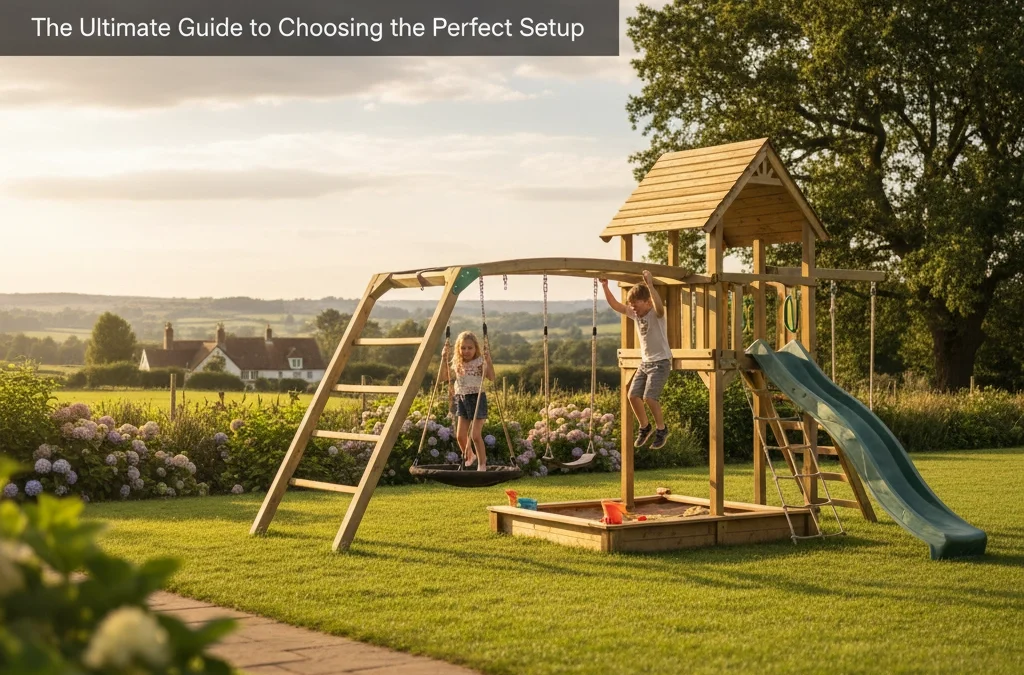Climbing frames with monkey bars represent one of the most popular outdoor play investments for UK families. These versatile structures combine physical challenges with developmental benefits, creating comprehensive play experiences that grow with children. Understanding the options available and making informed decisions ensures families select equipment that provides years of safe, engaging outdoor activity.
Understanding Climbing Frames with Monkey Bars
A climbing frame with monkey bars integrates traditional climbing elements with overhead swinging bars, creating multi-faceted play structures. These systems typically feature various climbing challenges including ladders, rock walls, and rope elements, while monkey bars provide upper body strengthening opportunities through hand-over-hand movement.
Modern UK climbing frames range from simple wooden structures with basic monkey bar attachments to elaborate multi-level systems incorporating slides, swings, and adventure features. The combination appeals to children across different age ranges and skill levels, making these installations particularly valuable for families with multiple children.
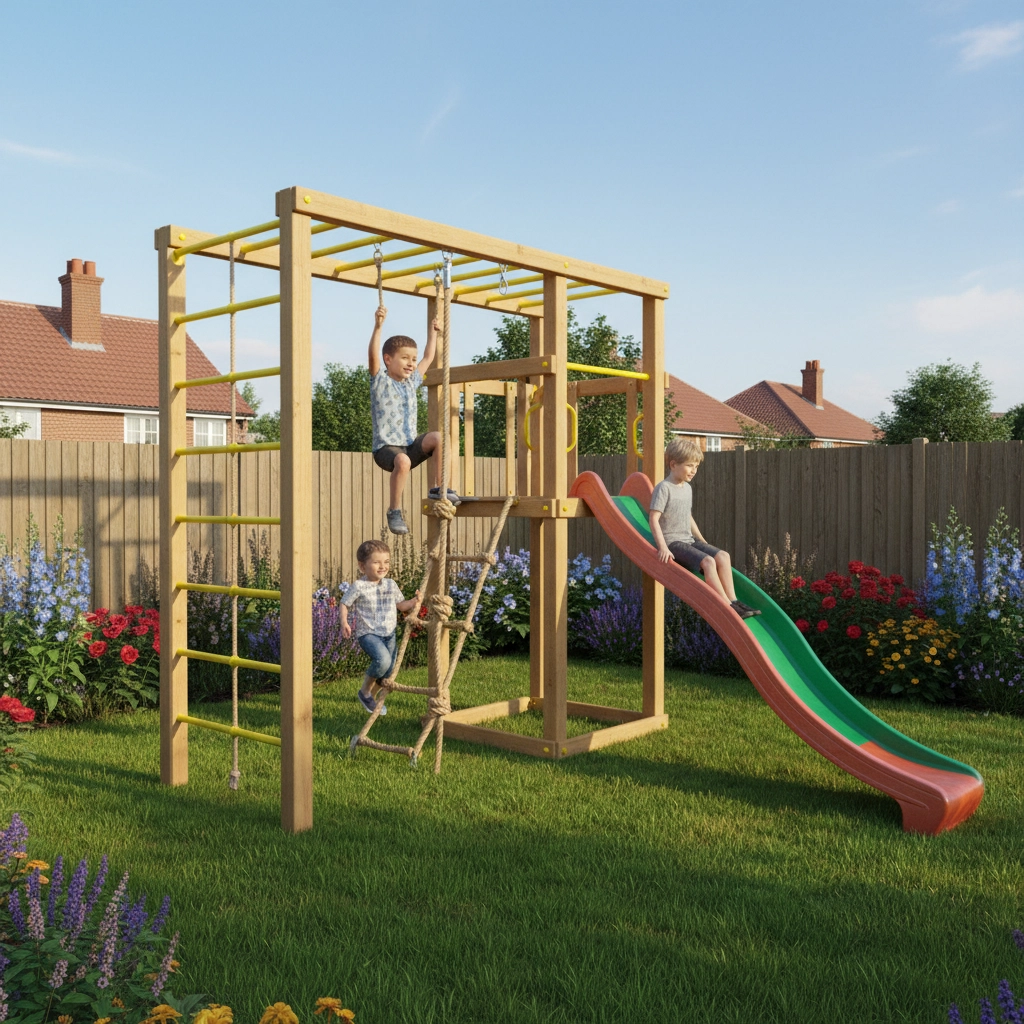
Planning Your Garden Space Requirements
Proper space assessment forms the foundation of successful climbing frame installation. UK gardens vary significantly in size and layout, making careful measurement essential before selecting equipment.
Minimum Space Considerations
Professional installation standards recommend maintaining clearance zones of at least 1.5 to 2 metres around all sides of climbing frames. This safety buffer ensures children have adequate space for dismounting and reduces collision risks during active play. Additional clearance may be required for frames incorporating swings or extended monkey bar sections.
Ground Conditions and Preparation
Level ground provides the safest foundation for climbing frame installation. Sloped areas may require additional preparation or professional levelling services. Ground surface considerations include natural grass, rubber safety matting, or impact-absorbing materials like play bark or wood chips.
Height Clearance Assessment
Overhead clearance requires careful evaluation, particularly for frames with elevated platforms or swing components. Check for overhanging tree branches, power lines, or building eaves that could pose safety risks. UK safety standards recommend maintaining at least 2.4 metres of overhead clearance above the highest play surface.
Age-Appropriate Feature Selection
Selecting appropriate features ensures climbing frames provide suitable challenges while maintaining safety standards for intended users.
Early Years (Ages 3-5)
Younger children benefit from climbing frames featuring lower platforms, gentle slides, and accessible ladder systems. Monkey bars at reduced heights with closer spacing accommodate smaller hands and developing grip strength. Safety features might include enclosed platforms and shorter drop distances.
School Age Children (Ages 6-12)
This age group can handle standard-height monkey bars, rock wall features, and more challenging climbing elements. Upper body strength and coordination have typically developed sufficiently to safely navigate overhead bar systems. Additional features like fireman's poles and rope climbs provide exciting challenges.
Teenagers and Beyond
Heavy-duty systems accommodate older children and family members. Commercial-grade frames often support adult weights, extending the equipment's useful life and family engagement potential.
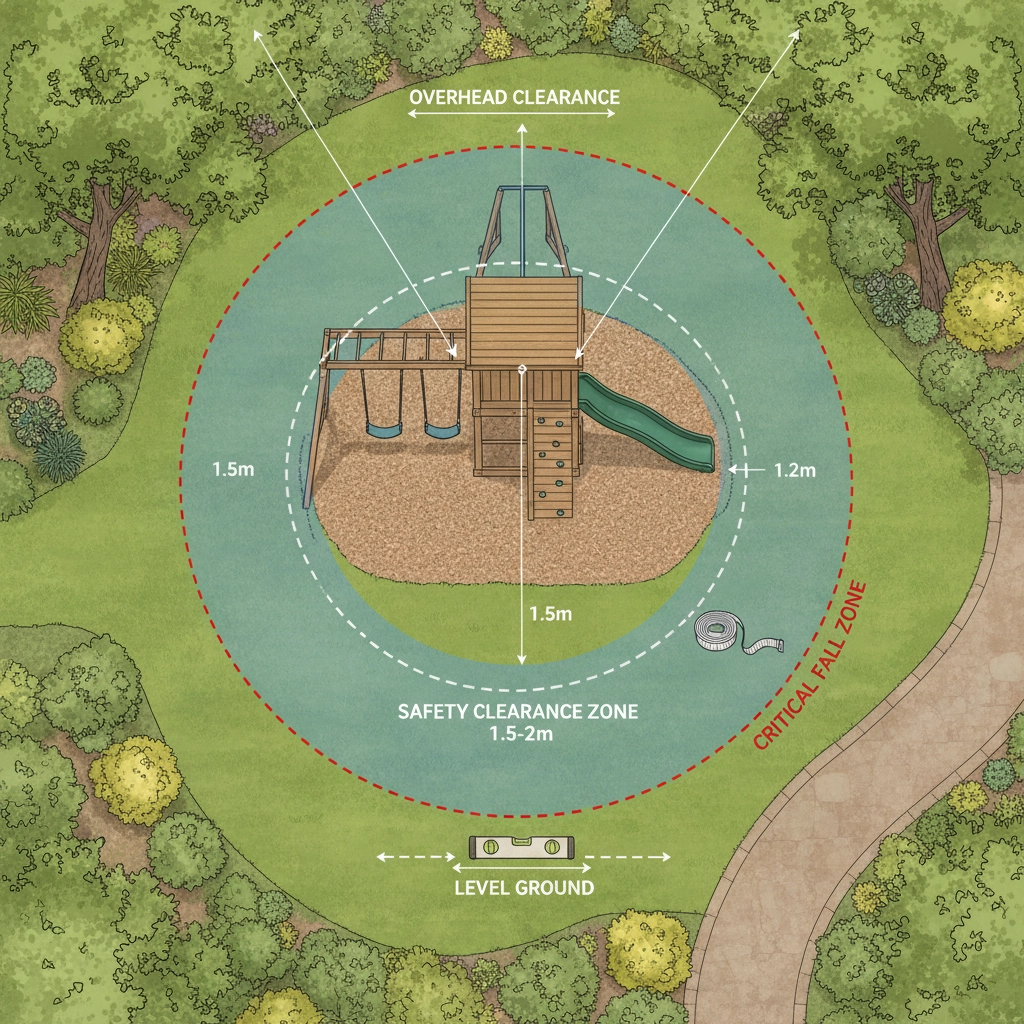
Types of Climbing Frames Available in the UK
The UK market offers diverse climbing frame options, each with distinct advantages and features.
Wooden Climbing Frames
Traditional wooden structures remain popular choices for UK gardens. Pressure-treated timber provides weather resistance suitable for UK climate conditions. Wooden frames typically feature modular designs, allowing customisation and future expansion. Premium hardwood options offer enhanced durability and natural aesthetics.
Metal Frame Systems
Galvanised steel and powder-coated metal frames provide exceptional durability and weather resistance. These systems often incorporate more complex monkey bar configurations and can support heavier weight limits. Metal frames typically require less maintenance than wooden alternatives but may lack the natural garden integration some families prefer.
Combination Systems
Modern climbing frames frequently combine materials, utilising wooden platforms with metal monkey bars and climbing elements. This approach maximises both aesthetic appeal and functional performance while optimising cost-effectiveness.
Essential Safety Considerations
Safety standards guide all aspects of climbing frame selection and installation in the UK.
Foundation Requirements
Proper installation demands concrete footings extending at least 60cm below ground level for adequate stability. Foundation work must account for UK frost conditions and drainage requirements. Professional installation ensures compliance with structural standards and long-term stability.
Component Quality Standards
UK safety regulations require specific material standards for outdoor play equipment. Monkey bars must support designated weight limits with appropriate safety factors. Connection hardware requires corrosion-resistant treatments suitable for British weather conditions.
Ongoing Maintenance Requirements
Regular safety inspections identify wear, damage, or loosening components before they become hazardous. Maintenance schedules should include checking mounting points, inspecting metal components for corrosion, and ensuring all safety features remain properly secured.
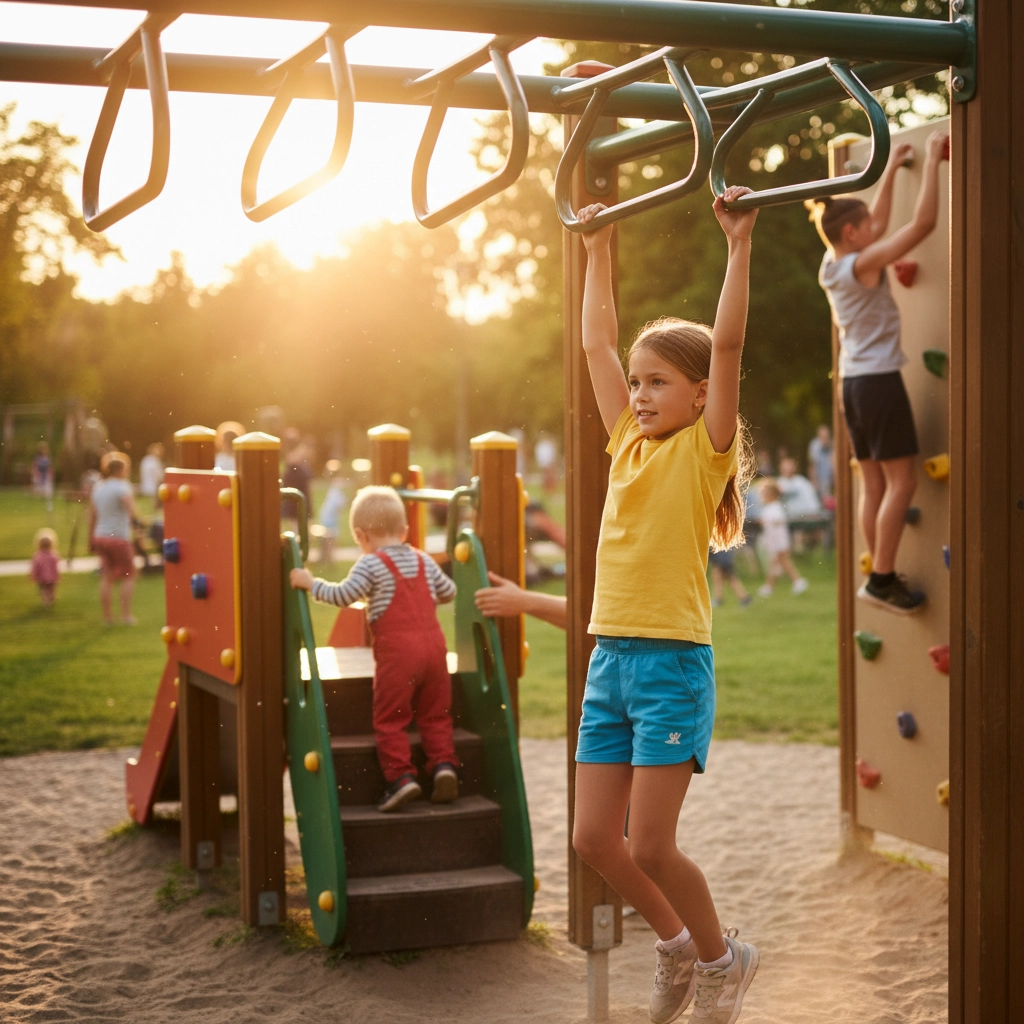
Installation Options and Considerations
Families can choose between professional installation services and self-assembly options, each with distinct advantages.
Professional Installation Benefits
Professional installers bring expertise in foundation preparation, structural assembly, and safety compliance. This approach ensures proper installation techniques and typically includes warranty coverage for both materials and workmanship. Professional services handle permit requirements where applicable and provide post-installation safety inspections.
Self-Assembly Considerations
Many climbing frame manufacturers design systems for competent DIY installation. Self-assembly requires careful attention to instruction manuals, proper tool usage, and safety procedures. Foundation preparation often requires professional assistance regardless of assembly approach.
Modular Expansion Possibilities
Many modern systems accommodate future additions, allowing families to expand climbing frames as children grow or interests change. This flexibility maximises long-term value and maintains equipment relevance through different developmental stages.
Selecting Features and Accessories
Comprehensive climbing frames often incorporate various elements beyond basic climbing and monkey bar functions.
Swing Integration
Many systems accommodate swing attachments, creating multi-activity play centres. Swing components require additional clearance considerations and may necessitate separate foundation points.
Slide and Adventure Elements
Slides, tunnels, and themed accessories enhance play value and encourage varied physical activities. These elements should complement rather than compromise core climbing and monkey bar functions.
Weather Protection Features
Covered areas or canopy options provide weather protection, extending useable time throughout UK seasons. These additions require careful integration with existing features and may affect overall clearance requirements.
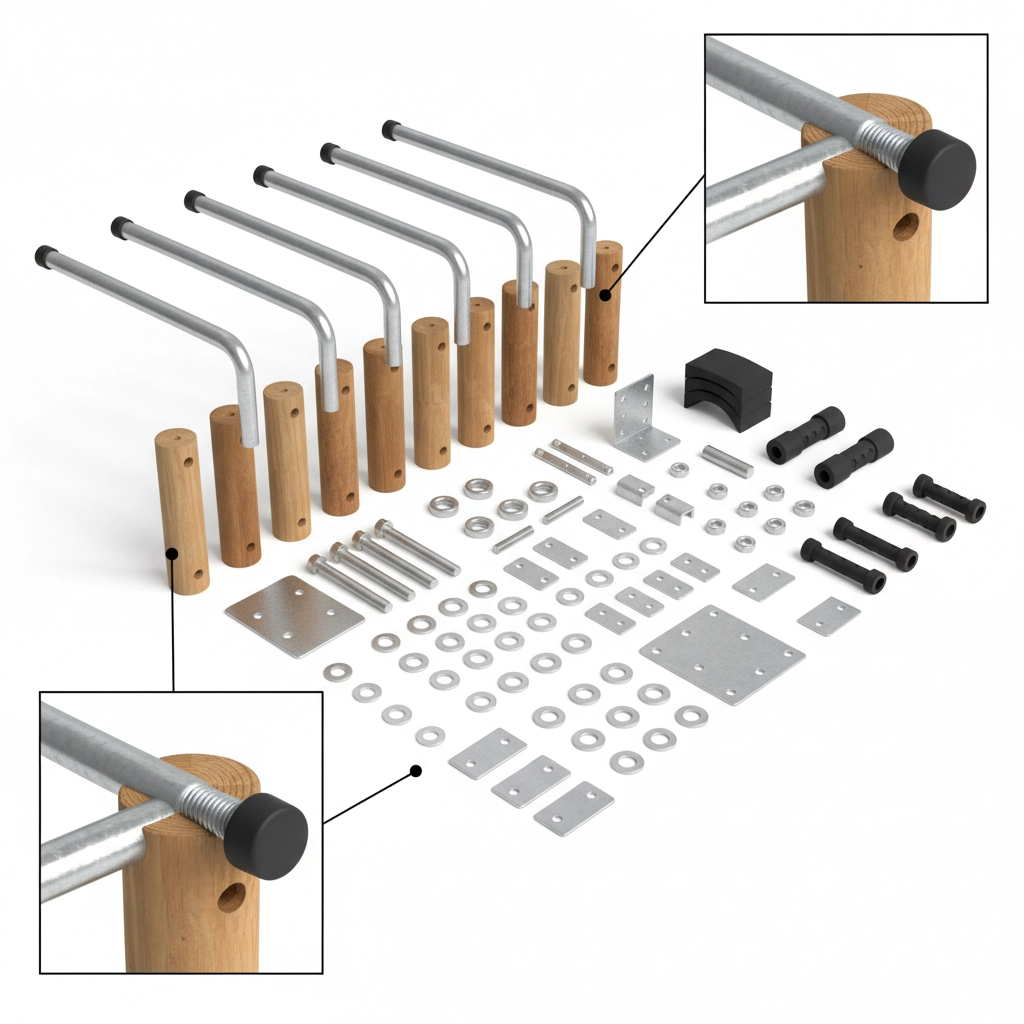
Making the Final Decision
Selecting the optimal climbing frame with monkey bars involves balancing multiple considerations including available space, budget constraints, safety requirements, and family preferences.
Budget Planning
Quality climbing frames represent significant investments, with costs varying based on size, materials, and complexity. Professional installation typically adds 20-30% to equipment costs but ensures proper setup and safety compliance. Long-term maintenance costs should factor into overall budget planning.
Warranty and Support
Reputable manufacturers provide comprehensive warranty coverage for both materials and structural components. Local dealer support ensures access to replacement parts and ongoing maintenance assistance throughout the equipment's lifespan.
Future Expansion Potential
Consider systems that accommodate future additions or modifications. Modular designs allow gradual expansion as budgets permit or family needs change, maximising long-term value and continued engagement.
The selection process requires careful evaluation of space constraints, age-appropriate features, safety standards, and long-term value considerations. Whether choosing professional installation or self-assembly approaches, prioritising quality materials and proper safety compliance ensures years of safe, engaging outdoor play for the entire family. Professional guidance helps navigate the various options available and ensures optimal selection for specific circumstances and requirements.

